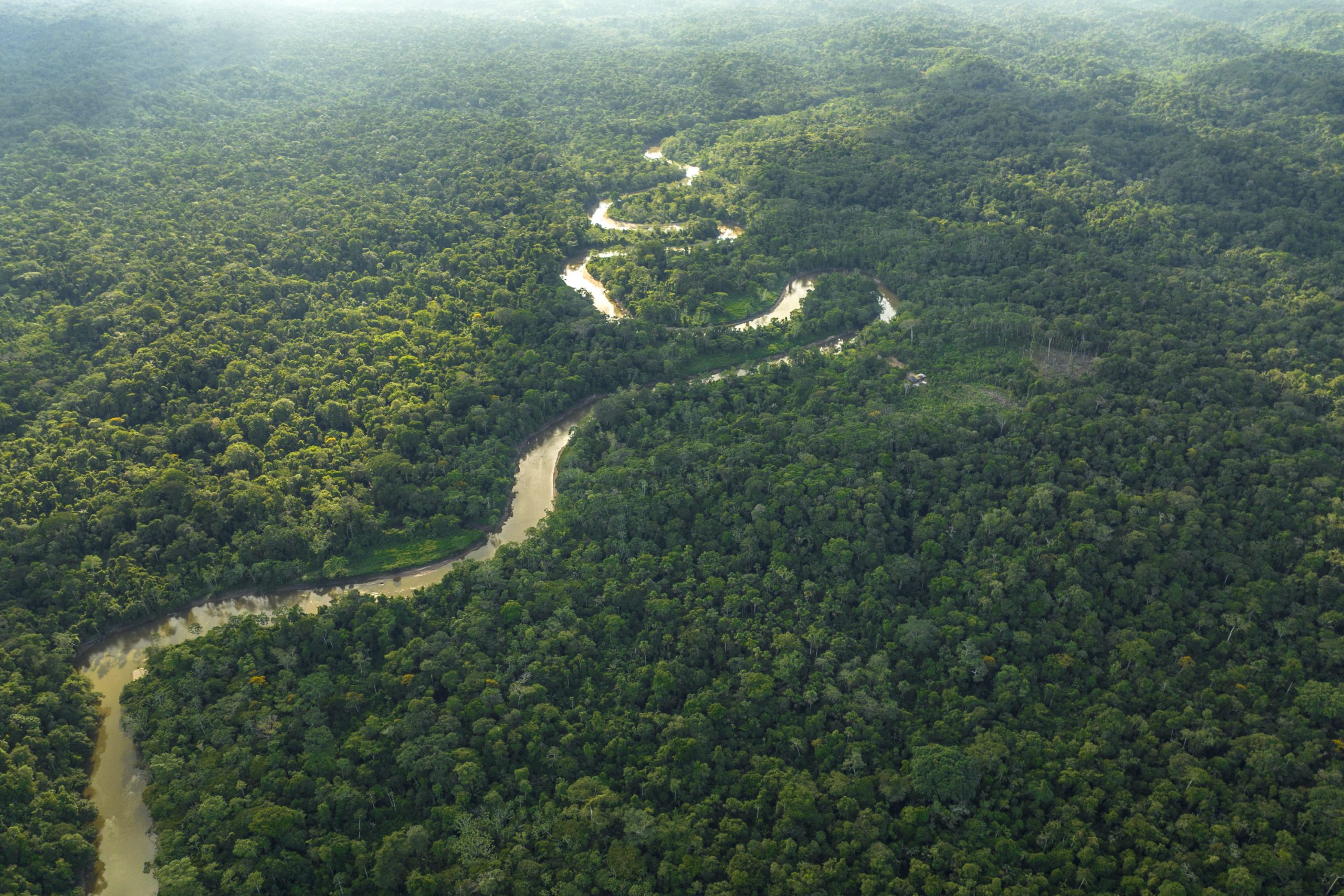YASUNI NATIONAL PARK
The Yasuni National Park is Ecuador’s largest protected area, just over one million hectares in size. It is part of the Yasuni Biosphere Reserve, an area about twice the size of the National Park which includes the Waorani territory and the “intangible zone” which is the home of the Tagaeri-Taromenane people, two related groups who still live in isolation in the jungle hunting and foraging and who have resisted contact from the outside world. Recognized by UNESCO as a World Biosphere Reserve for its remarkable, unique ecosystem and biodiversity, the Yasuni Biosphere Reserve is home to an amazing variety of species with world records for the diversity of amphibian, reptile, bat and tree species, placing the region among the most biodiverse places on Earth.
In Yasuni National Park, over 1400 distinct animal species have been identified, including about 140 species of amphibians, a world record for a single area; in the entire North American continent there are only about 99 identified amphibians. Just over 600 species of birds call the park home, one third of all the known species in the entire Amazon region, plus 204 mammal species including 12 different monkey species. One hectare can be home to 100,000 species of insects, equal to the known species on the entire North American continent; 50 hectares can contain up to 1,300 distinct plant species.
The northern border of the park is the Napo River, one of the largest in the Ecuadorian Amazon, a major transportation corridor and the zone of most visitor lodges in the Yasuni region. Mandari Panga is situated further south, along the Tiputini river in a region where humans have seldom entered, and probably the most pristine area of the park that tourists can access.
THE AMAZON RAINFOREST
The Yasuni National Park is part of the Amazon Rainforest.
The Amazon is the world’s largest and best known tropical rainforest. As measured by primary forest extent, the Amazon rainforest is more than three times larger than that of the Congo Basin, the world’s second largest rainforest. The Amazon rainforest accounts for just over a third of tree cover across the tropics.
The Amazon River, which drains an area nearly the size of the forty-eight contiguous United States, is the world’s biggest river. It carries more than five times the volume of the Congo or twelve times that of the Mississippi. By one estimate, 70% of South America’s GDP is produced in areas that receive rainfall generated by the Amazon rainforest. This includes South America’s agricultural breadbasket and some of its largest cities.
Due to its size, the Amazon leads all tropical forest areas in terms of its annual area of forest loss. Between 2002 and 2019, more than 30 million hectares of primary forest was cleared in the region, or about half the world’s total tropical primary forest loss during that period.
The Amazon is thought to house more than half the world’s “uncontacted” tribes living in voluntary isolation from the rest of humanity. However the vast majority of indigenous peoples in the Amazon live in cities, towns, and villages.
Expedition log or travel dairy
Tom Vierus blog: Livingdreams.TV
National Geographic UK. Ecuador: the hothouse heart of the jungle by Adrian Phillips
https://www.nationalgeographic.co.uk/travel/2017/10/ecuador-the-hothouse-heart-of-the-jungle
To learn more about Yasuni National Park and its unique biodiversity, culture, and the threats it faces, here are some options:
Watch the documentary “Yasuni Man”: This documentary tells the story of a young American biologist who travels to Yasuni National Park to study the biodiversity of the area and becomes involved in the struggle to protect the park from oil exploitation.
BOOKS TO READ
“The Yasuni Green Gold: The Amazon Fight to Keep Oil Underground” by Ivonne Yanez: This book provides an overview of the history of oil exploration in Ecuador and the environmental and social impacts it has had on the country, with a focus on Yasuni National Park.
“The Hidden Life of Trees” by Peter Wohlleben – Although this book isn’t specifically about the Yasuni National Park, it provides an interesting perspective on the interconnectedness of forests and the complex relationships between trees, animals, and humans.
“The Ecology of Freedom” by Murray Bookchin: This book explores the concept of social ecology and proposes a decentralized, non-hierarchical society based on ecological principles.
Global Conservation Significance of Ecuador’s Yasuní National Park
This Park in Ecuador is One of the Most Biodiverse Places on Earth
The Amazon Rainforest: The World’s Largest Rainforest

